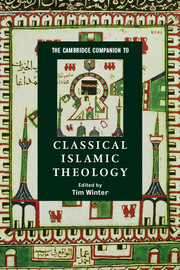13 - Theology and Sufism
from Part II: - Themes
Published online by Cambridge University Press: 28 June 2008
Summary
INTRODUCTION
Concepts of God aremere simulacra. Such, in brief, was the teaching of the great Hispano-Arab mystical theologian Muhyi'l-Dīn ibn 'Arabī (d. 1240). In his typically outspoken formulation, the conceptual God is just a “created God”. He is, according to Ibn 'Arabī's expression “the God created in dogmas” (al-Haqq al-makhlūq fi'l-i'tiqādāt). In the Islamic ethos, such a deity is ultimately a deception. “All that you worship instead of God is nothing but names which you have invented, you and your forefathers, for which God has bestowed no warrant from on high!” (Qur'an 12:40). In a “civilisational event” charged with numinosity, at the conquest of Mecca on Thursday 20 Ramadan 8 (11 January 630), the Prophet enters the Great Sanctuary on his camel Qaswe, fully armed. He first touches his staff to the Black Stone in the north-east corner of the Ka'ba, magnifying God. In a deafening crescendo, the cry Allāhu akbar (God is most great) is taken up by the thousands of onlookers before the Prophet hushes them with a gesture. After making his tawāf, the seven ritual circuits of the Ka'ba, the Prophet next turns to face the surrounding idols of the pagan Arabs. There are 360 in all, standing for each degree in a vast circle of universal illusion. The Prophet rides slowly round, pointing his staff at each totem, and intones the verse of the Qur'an: “The Real has now come and the false has vanished: for behold, the false is bound to vanish!” (17:81). As he points, one idol after another lurches forward on its face.
- Type
- Chapter
- Information
- The Cambridge Companion to Classical Islamic Theology , pp. 258 - 287Publisher: Cambridge University PressPrint publication year: 2008
- 7
- Cited by

